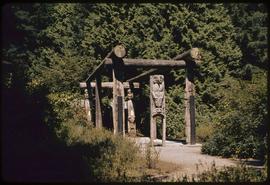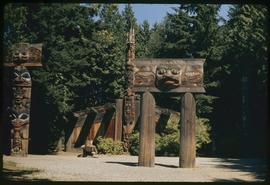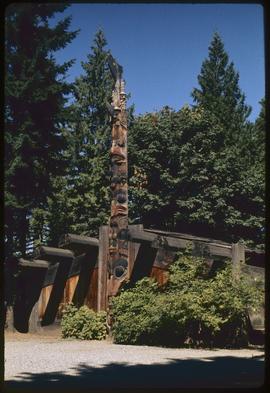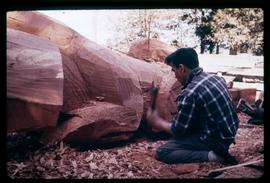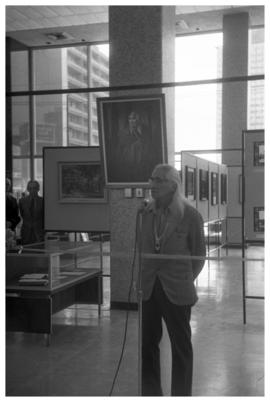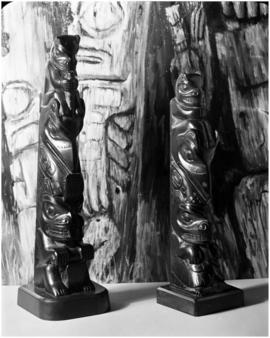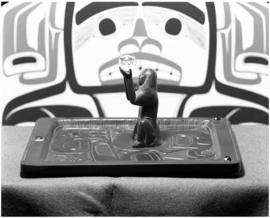- 12
- Fonds
- 1986 - 1987
The fonds consists of photographs created by Ronnie Tessler between 1986 and 1987 documenting a canoe project by Nisga’a carver Norman Tait. The project was abandoned in the summer of 1987, and the canoe was left uncompleted. The photographs depict models for the canoe, transportation of the log for the canoe to the Museum of Anthropology, ceremonies performed throughout the project, and various stages of work on the canoe and model. Additional photographs from this period depict a totem pole-raising ceremony at Capilano Mall in North Vancouver, as well as portraits of Les Baker, a model Tait wanted to use for a “white man” mask. The fonds is arranged into a single series: Norman Tait canoe project and related materials.
Sans titre



